You’re about to embark on Paris and now you might be wondering how you’re going to get around the city. Paris is a fabulous walking city, however, at one point or another, you’ll likely need to take some form of transportation. While Paris’ public transit system is one of the best in the world, it can be a little daunting, particularly for first-time users. Your first glance, métro map might look like an insane maze, but it really and truly isn’t so difficult to use – especially after you’ve read our handy guide of important things to know before using public transport in Paris.
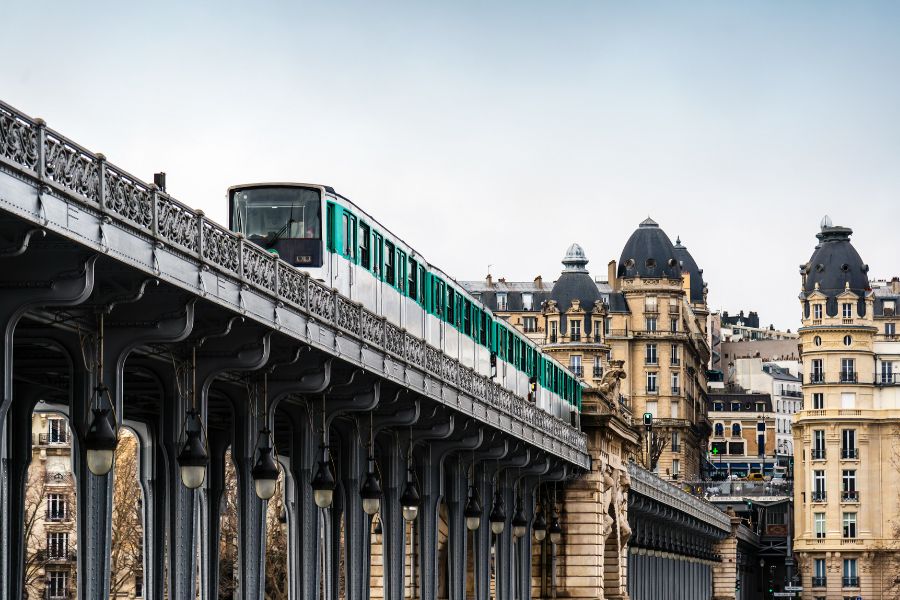
There are multiple modes of public transport in Paris
Top of our list of the most important things to know before using public transport in Paris is getting to know its different modes of transportation. The following forms of transit are managed by Ile-de-France Mobilités:
- Le métro: Le métro (short for “le Métropolitain”) is Paris’ underground or subway system. The vast network consists of a whopping 303 stations with 16 different lines that crisscross Paris and its nearby suburbs. Each line is numbered (1 to 14, and two “bis” – mini lines), these all have a slightly different color, but since the tones can be similar, it’s best to think of each one by its number.
- Le RER: Le RER (short for “le Réseau Express Régional d’Île-de-France”) are suburban trains that can be used as the métro within the city center. It’s a lettered system (A through E) and as long as you’re traveling within Zone 1 of Paris (more on this below), you can use it with regular métro tickets.
- Buses: The same word as in English (but pronounced “boos”), there are 61 bus lines in Paris and many others in the suburbs. Unlike London or other cities, the bus is a little less useful for tourists in Paris. However, if you have a convenient bus line near your accommodation, it could come in handy.
- Trams: There are tramway/streetcar lines that run along the edge of the city and in some suburbs. Due to their location, you likely won’t take one during your stay, unless you’re staying nearby.
- Le Funiculaire de Montmartre: Paris has one funicular, a modern cable car that travels from the base of Sacré-Coeur up to near the Basilica. Taking it means you can avoid walking up the 222 steps found next to it, so it’s particularly useful for anyone with reduced mobility or families.
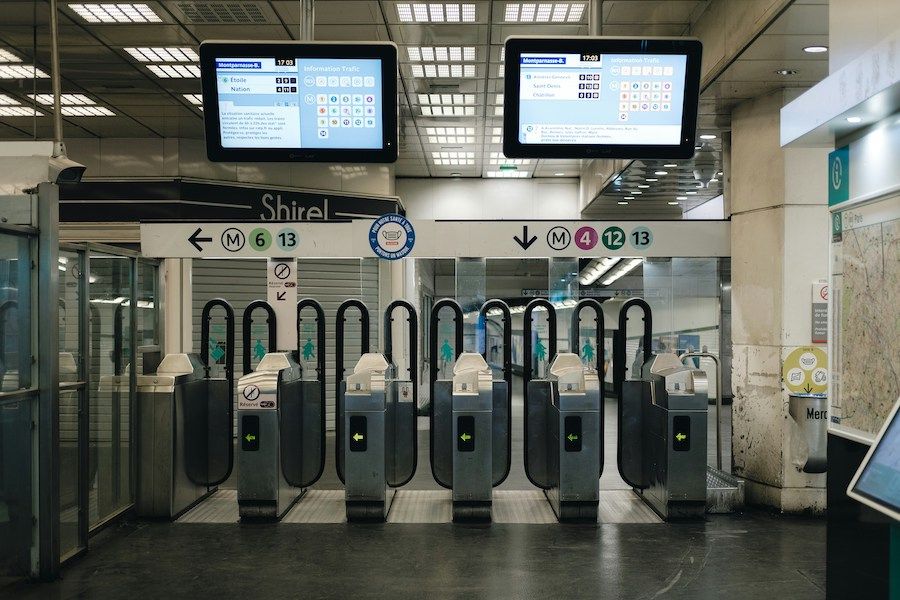
A single journey ticket is valid for a limited time and city zone
Parisian transit tickets, called T+ and available in virtual and physical formats, are valid for 90 minutes. You can interchange between the same form of transportation (underground networks métro to RER within the city) or from one bus to another or the tram.
There are five zones within the Paris transit system, which is made up of Paris and its suburbs in the Ile-de-France region. All 20 arrondissements of Paris are Zone 1, so you won’t likely need to worry about which zone as most visitors stay within the city limits. If you take the métro to a different zone, you don’t need a special ticket, however, if you take the RER outside of Paris (like to the airport or Versailles), this requires a different, more expensive ticket.
Keep your ticket until you finish your journey
Another of the most important things to know before using public transport in Paris is that if you’re using a single-use ticket, you MUST keep your ticket until you exit the turnstiles of a station. This acts as your proof of purchase, if you can’t produce it during a ticket control you could face a 50 euro fine – yikes!
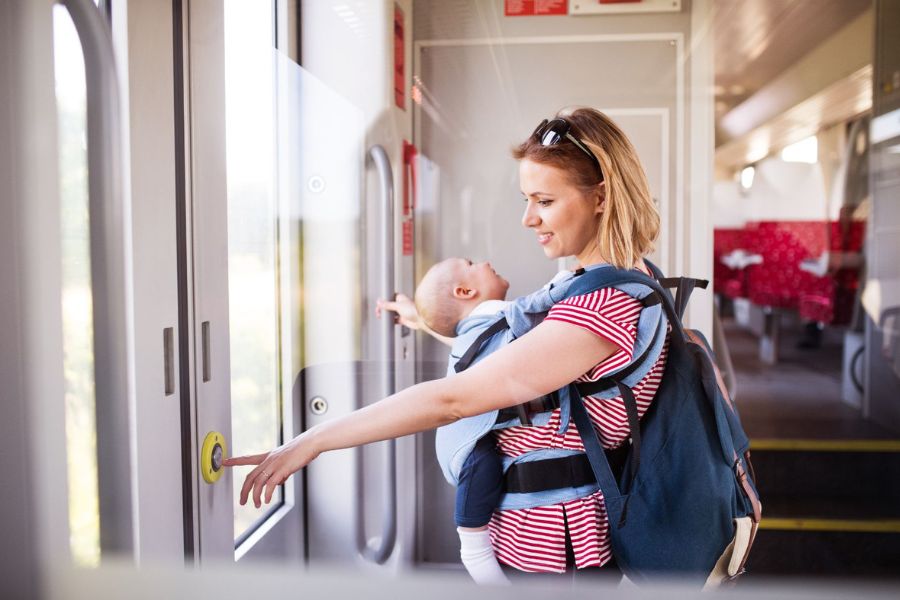
Kids under 10 travel at a discount or are free
If you’re traveling with kids nine and under, they’re eligible for discount tickets. You can find full information in our dedicated article on the topic.
Unless you plan on using transit a LOT, don’t get an unlimited pass
Since Paris is such a great walking city, we don’t really recommend getting an unlimited “Paris Visite” or “Navigo” unlimited week or day pass. They are rarely worth the cost (except if you use them for the airport, as we outline in this article). Instead, we suggest you get a Navigo Easy card. This is a thick plastic card onto which you can load tickets purchased from station ticket vendors, automatic ticket vending machines, or your phone. You can buy virtual tickets via the Ile-de-France Mobilités app and use them directly on your phone, read all about how in this article.
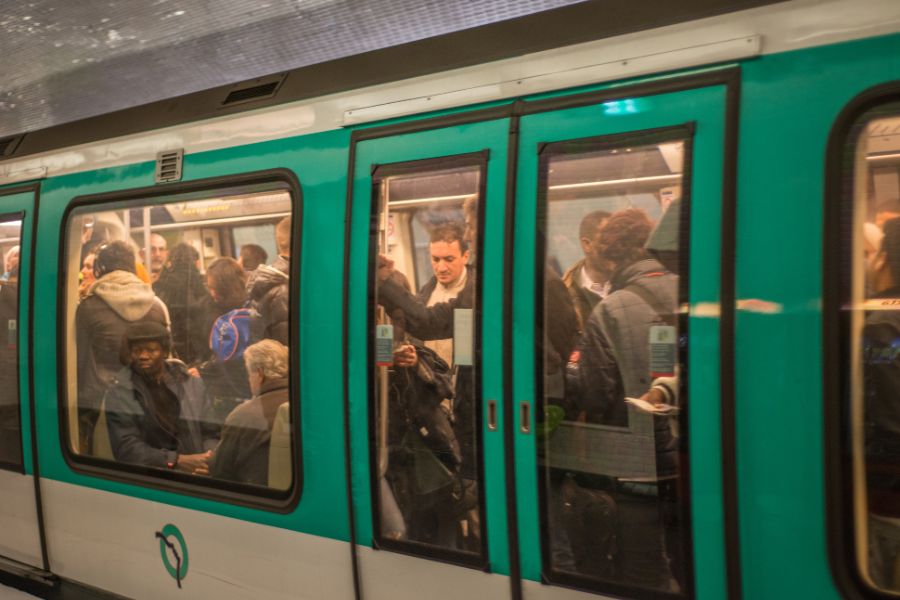
Transport is MUCH busier during rush hour
Not surprisingly, Paris transportation is a lot busier during rush hour when Parisians are heading to or returning home from work. This is approximately from 8 am to 9:30 am and 5 pm to 7 pm. Sometimes it isn’t so bad, other times you’re squashed in like sardines. So, avoid taking public transit at these times when possible.
The métro does NOT run 24/7
As much as Parisians would LOVE the métro to operate 24/7, it sadly does not. That said, the métro does have pretty good hours and there’s an alternative for when it’s closed. It runs roughly from 5:30 am to 1 am Sunday to Thursday and until 2 am on Friday and Saturday nights. The first and last train departure varies per station, depending on where it’s found along the line. While the métro is closed, there are night buses (called Noctiliens), although these run much less than the métro. If you want to know real-time schedules, download and use the CityMapper app or Google Maps app on Apple or Android.
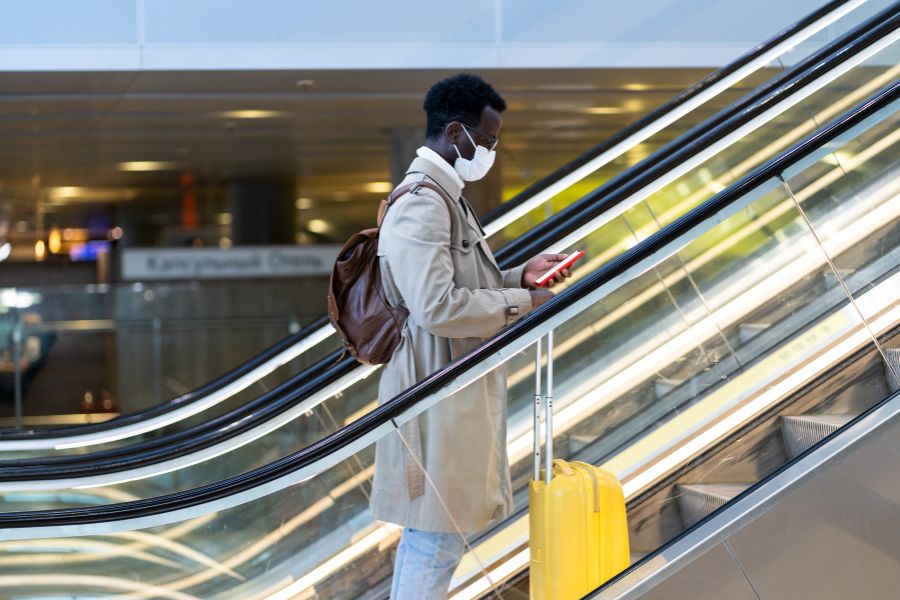
The métro has very few escalators or elevators and LOTS of steps
Even though we recommend taking the métro in Paris, its biggest downside is its low number of elevators or escalators. That means you’ll have to walk up and down sets of steps to get down to the platform and to travel from one line to another within interchange stations. This is especially challenging when you have a large suitcase, a stroller, or for those with reduced mobility.
On the bright side, métro line 14 and RER stations tend to have elevators and/or escalators, so if you have trouble with stairs, you might like to choose to stay near a station on one of those lines. Buses are a better option for travelers with reduced mobility. You can find more useful information for those with reduced mobility here.
Always stand on the right if you’re standing on an escalator
When you DO come across an escalator, before you jump for joy, make sure you’re standing on its right side. Some users prefer to walk up or down escalators, so you need to leave room for them to get past. If you don’t, you might hear a stern “pardon” from the walker approaching behind you – this is your cue to step over to the right.
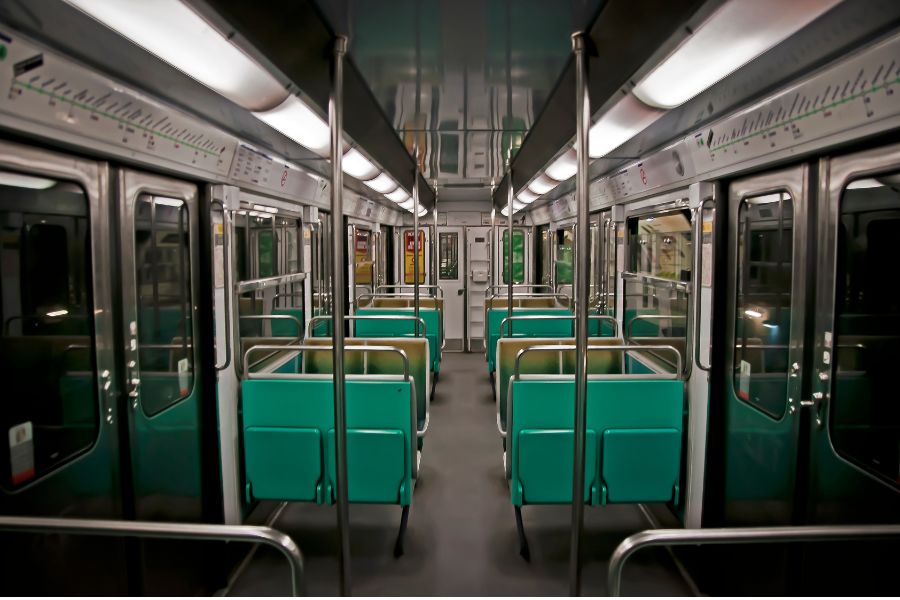
When the metro is busy, don’t use the flip-down seats
The métro and RER have flip-down seats in the wider sections in front of the doors. It’s more than fine to use these if there aren’t many passengers aboard, but if these areas start filling up, you should stand up. Staying seated is a BIG pet peeve of Parisians … and might garner you a sterner comment than a simple “pardon.”

Beware of pickpockets
Although Paris is globally a pretty safe city, the métro is where pickpockets are the most active. This is especially so on the lines most used by tourists – lines 1,2, and 4 as well as RER B which travels to CDG and Orly airports. Try to be extra mindful on the métro, keep your handbag or backpack in front of you and zipped up and you shouldn’t have any undesirable encounters with pickpockets.
Try to NOT forget any bags on the train or platform
We know that you wouldn’t leave a bag on the métro on purpose, but do try not to leave anything on the métro (even an empty shopping bag), because it can really hold up traffic as the bomb squad has to be called in.
If you DO lose something, there’s actually a chance you might retrieve it. The Paris transit system has a Lost and Found service. There are good samaritans who will turn in forgotten items to the métro staff and we even know of people who retrieved misplaced luggage, passports, AND even computers! That said, be a little extra careful that you’ve got all your belongings with you when leaving the métro.
For more information on Paris’s public transport system, check out our video guide to the métro below.
If you found our article on important things to know before using public transport in Paris useful, read these articles next:
Pin this…










